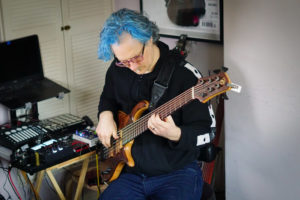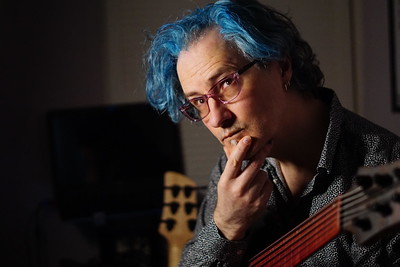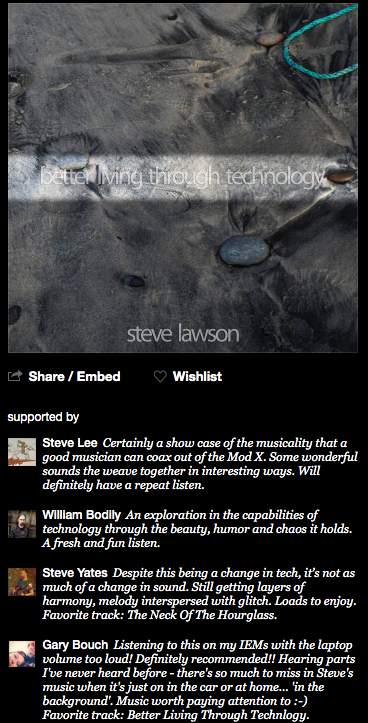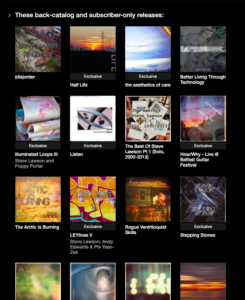This post was originally posted as a Twitter thread about the subscriber release schedule and its creative implications. Here’s the first one if you want to click on it and read it in its original form:
Recorded a thing last night. Liked it, but wasn't sure how much. Still, mastered it so I had a 'finished' version.
Have listened to it three times in a row this morning, all 24 minutes of it. So I guess that's good, eh?
Subscribers, first new release of 2021 coming soon 🙂
— SoloBassSteve@mastodon.social (@solobasssteve) January 8, 2021
And here’s the post edited slightly to turn it into a readable blog post. It’s more thinking out loud about my PhD (specifically chapter 3 of my PhD 🙂 ) but may be useful for those of you trying to make some sense of the various release models for music and various non-monetary considerations when trying to map value in the exchange between artist and audience.
-o0o-
Recorded a thing last night. Liked it, but wasn’t sure how much. Still, mastered it so I had a ‘finished’ version. Have listened to it three times in a row this morning, all 24 minutes of it. So I guess that’s good, eh? Subscribers, first new release of 2021 coming soon 🙂
I once read Brian Eno quoted as saying that he doesn’t read reviews of his work because it’s always years behind what he’s actually working on at that time. That disconnect from the people experiencing your work struck me as a problem to be overcome, rather than embraced. I’m HUGELY grateful for informed, generous, interested commentary on what I do. Not magazines telling us what’s hot or not, but people who are genuinely invested in the art and the artist discussing its meaning and value to them…
So having created a space in which the people who care about what I do can get it within hours or even minutes of me recording it means that I don’t rely on some delayed commentary from people who want to position my work within some much wider contextual field. (not that that’s not OK, just that it’s not interesting or particularly informative for me as an artist) – instead, I get feedback and commentary from people who understand it as the next chapter in a longer journey, people who’ve often heard more music by me than ANYONE else…
…I don’t mean many of my subscribers have spent more time listening to me (that may be true of a few, but I don’t think I dominate the listening of most of them 🙂 ) – but that they’ve heard more recordings by me, by virtue of them existing. 90-something albums, so far. 🙂
So, that body of knowledge, opinion, experience, expertise and – crucially – care becomes a resource. Not just for me but for the community as a whole. It gets shared, stories get told and I get to make more music in response to it, liberated and educated by it. And the series of recordings function not as commercial commodities with a fixed unit value but as what Jyri Engeström called ‘Social Objects’ – entities around which social interactions can happen. Interactions which accumulate multiple forms of capital and meaning through the process
So narrowing that temporal gap between recording and release, between my experiments and the response and reaction of a caring, informed community who – collectively – know more about what I’ve done than I do, becomes an act of creative liberation, enabling more art to happen.
I couldn’t do this, or extract meaning from it, if I had to record it then market it, send it to journalists and radio, harangue my extended listenership into adding it to playlists, liking and sharing & all that bullshit in the hope that someone would add it to a sleep playlist. The unit value of any one of these recordings is wholly undetermined. I’ve no idea which elements of the subscription people find most value in, or if as I suspect it’s ‘the whole experience’ that gives it meaning. Along the way, I get to document it and make more & better music
A vital comment on this came from Chris Mapp who made the distinction in relation to all this between curation and archiving. I think I’ve gradually shifted from being a curator to an archivist, the greater my degree of trust & experience of value in the expertise of the community. I have a threshold for the value of a subscriber release, but it’s not ‘will this make money? Can I recoup my investment?’. It’s ‘does this add meaningfully to the existing body of work? Will the subscribers find this interesting, enjoyable, worthwhile & value the time spent?’
All of this, of course, relies on it being improvised (or perhaps I could do it if I composed very quickly, but the lines between improv and composition get rapidly blurred there), because 200 versions of my greatest hit would be meaningless without each having its own community…meaning, when Pearl Jam released a CD of every gig on a tour, they did it not really expecting anyone to find much value in hearing all of it. Owning all if it, perhaps, for the social capital, but the personalisation of getting the gig you were at was the real value. The body of work was still those 20 or so songs that everyone knew. The value was in hearing it and saying ‘I was there’. I’m working on making the entire catalogue have cumulative value, with the added bonus that many of them are live recordings so ‘I was there’ is possible too!
[addendum] It’s perhaps worth distinguishing between this model and asking my audience what I should release, in the style of a crowd-funding vote-for-your-favourite tracks model. Cos that’s a million miles from this. The joy of the subscriber community is that their involvement is not conditional on a particular response from me. The buy-in is ‘be a part of this’, not ‘if you do this, I’ll record this kind of music for you’ or ‘let’s have a poll and see what the most popular choice is’. The beauty of this – and why I experience it as a community of practice – is that I never get subscribers saying or even implying ‘you need to do this or I’m withholding my support’. These are smart people who share their wisdom with care and concern, but let me make art, and are explicit about it. Constructive criticism is often couched in terms of ‘I don’t want you to stop what you’re doing, but this is how I experience it’. That’s never happened to me in any other context other than a gathering of fellow musicians trying to get better.
I experience it as a flattened hierarchy where I’m not being aloof, but neither am I doing a focus group to find out what the most popular choice is. I’m inviting commentary from people who know more than me about what I’m doing and then they let me get on with it.
the new thing is released for subscribers – go get it if you’re on board 🙂





